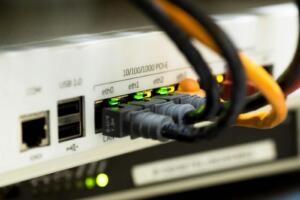Table of Contents
Broadband speed test nz is a key factor in determining the overall quality of your internet experience. It affects everything from browsing websites to video calls, online gaming, and streaming content in high definition. Consistently testing your internet speed regularly can help you understand how well your connection performs under different conditions and identify potential issues or bottlenecks that might cause slowdowns or interruptions. This information is useful for troubleshooting problems and ensuring your service meets your needs.
Introduction to Broadband Speed
Broadband speed is commonly expressed in megabits per second (Mbps) and measures how quickly data transfers between your device and the internet. Download speed refers to data coming into your device, influencing how fast you can load web pages, stream videos, or download files. Upload speed measures how quickly data leaves your device, which is important for sending emails, uploading files, or participating in video conferences.
Additionally, ping or latency, measured in milliseconds (ms), reflects the time it takes for a signal to travel between your device and a server. Low ping is especially important for real-time applications such as gaming—including popular card games like those from https://card-games.nz that NZ players enjoy—and video chats.
Choosing a Reliable Internet Speed Test NZ
Selecting an accurate internet speed test is crucial for obtaining useful results. Tests that connect to servers geographically close to your location, ideally within New Zealand, provide more precise measurements by reducing delays caused by distance. Tools like Ookla Speedtest, Fast.com, and nperf are commonly used and widely trusted for consistent results. When running speed tests, it’s important to close other applications that use bandwidth and, if possible, connect your device via Ethernet to avoid Wi-Fi interference, which can affect results.
Some speed test nz also measure additional factors like jitter, which reflects the variation in ping over time and can impact real-time applications. Choosing a speed test nz that offers detailed breakdowns helps users better understand their connection quality beyond just download and upload speeds. It’s also useful to pick tests that allow selecting different test servers to compare performance with multiple locations. This can help identify whether slowdowns occur within your local network or further along the internet route.
Regularly updating your device’s software and drivers before testing can also improve accuracy, as outdated firmware or network drivers may limit connection speeds.

Broadband Provider
Your choice of broadband provider affects the speed and reliability of your connection. Providers in New Zealand offer various connection types, such as fibre, ADSL, or fixed wireless, each with different performance characteristics and infrastructure limitations.
Fibre connections typically provide the highest speeds and lowest latency, while ADSL connections tend to be slower and more affected by distance from the exchange. Fixed wireless can vary based on signal strength and local terrain. Some providers also limit traffic during peak hours, which can reduce speeds temporarily. Knowing the technical details of your provider’s network can help you understand your speed test nz outcomes better.
Your Broadband Plan
Internet plans in New Zealand often advertise maximum speeds, but actual performance varies depending on several factors. These maximum speeds are theoretical limits under ideal conditions, which are rarely met in everyday use. Factors such as network congestion, device capabilities, and the time of day impact real-world speeds.
It’s important to review the terms of your plan carefully, including any fair use policies or data caps, to set realistic expectations and assess your speed test nz results accurately.
Conducting Multiple Speed Tests
Performing multiple speed tests across different times and days provides a clearer understanding of your connection’s stability and overall performance. Testing during peak hours, when many users are online simultaneously, can reveal if network congestion affects your speed. Comparing results from both wired and wireless connections also helps determine if hardware or Wi-Fi conditions are limiting your internet quality.
It’s beneficial to test using different devices as well since hardware capability and software settings can influence results. Documenting these results consistently over time can help identify patterns and provide useful information if you need to discuss performance issues with your provider.
Finding the Best Broadband Provider
Choosing the most suitable broadband provider depends on more than just speed offerings. Factors such as network reliability, customer service responsiveness, and local coverage are also important considerations when selecting a provider. Some providers offer plans designed for specific uses, such as gaming or streaming, with features like higher upload speeds or lower latency to support those activities effectively.
Gathering feedback from current users in your region and checking independent reviews can provide additional insights into provider performance, service quality, and overall customer satisfaction to help you make an informed decision.
FAQs
How accurate are the internet speed test results in New Zealand?
Internet speed test nz from different providers give a reasonable estimate of your connection’s performance, but several variables can influence accuracy. These include the test server’s location, current network traffic, and your device’s hardware. To improve reliability, use tests connected to New Zealand-based servers and run them multiple times at different hours. This approach helps in capturing a realistic range of your internet speed.
What do the download, upload, and ping results mean?
Download speed indicates how fast data arrives at your device, affecting activities like streaming videos or browsing websites. Upload speed measures how quickly data leaves your device, which impacts tasks such as uploading files or making video calls. Ping reflects the time delay for data to travel to a server and back; lower ping results in faster response times, which are important for interactive applications. Understanding these metrics can help you to assess your internet’s suitability for different online activities.
Why is my internet speed slower than what my provider promised?
Internet speeds may be slower than advertised due to factors like network congestion during busy periods when many users are online simultaneously. Equipment issues, such as outdated routers or modems, can also limit speeds. Wi-Fi signal quality may degrade due to interference or physical obstructions, reducing wireless performance. Additionally, some providers use traffic management policies that can affect speed. Checking these elements can clarify discrepancies and guide potential solutions.






